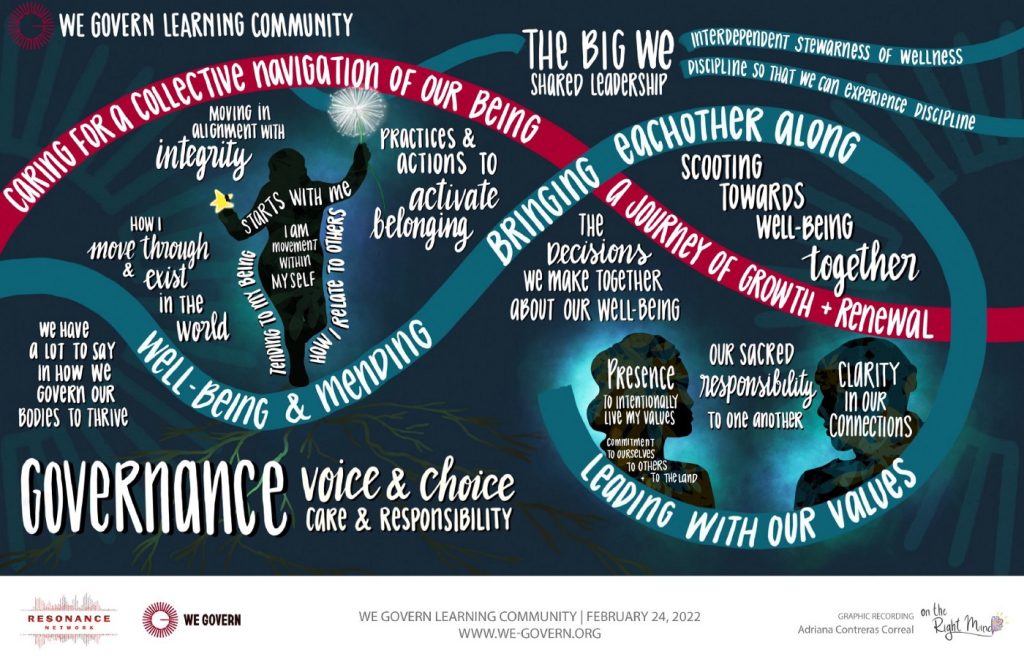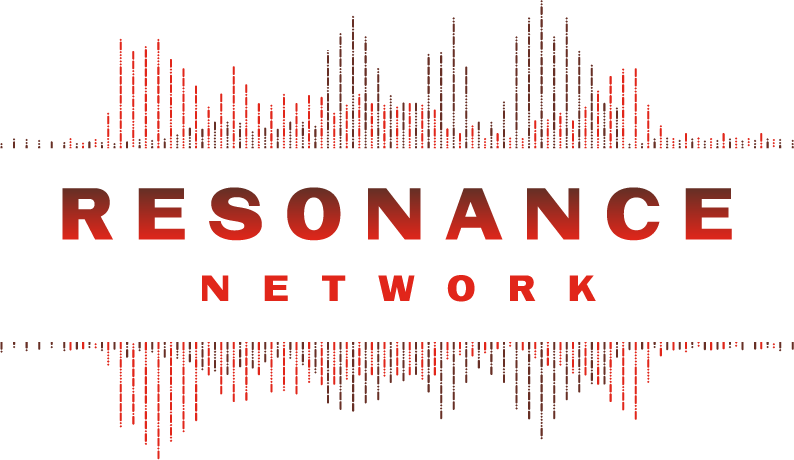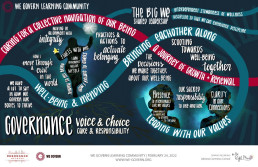Being in the humanity of governance, with all its messiness and joy
Reflections from the WeGovern Learning Community

How do we build ways of being that uplift the collective dignity, wholeness, and thriving of one another and the lands we inhabit?
How do we build ways of being where our collective wellbeing is carried by community?
How do we create opportunities to live a happy life? To find joy?
WeGovern Learning Community participants are exploring these questions together–discovering what it takes to live into the WeGovern principles today, in our current realities and communities.
This is collective governance, and it takes practice.
* * *
In phase two of the WeGovern Learning Community, a cohort of new and returning participants came together with a shared commitment to collective governance–in practice, embodiment, and reflection. In their first gathering, cohort members delved into what governance means to them, and how it shows up in their lives. Here are some highlights from that conversation:
“I am a movement within myself.” ~ Monique Tú Nguyen
- I used to think there wasn’t a clear rhythm to the way I make choices–that it just sort of happened as things came up. But when I reflected on it, I realized I have a methodical way of making decisions–with myself, choosing who I spend time with and what I spend time doing, and how I care for myself and use my resources emotionally, physically, spiritually, and financially. That’s governance, and there is power in that clarity.
- At work, we have to be clear about documentation; there are clear pathways and decision making protocols–but how are we clarifying, for ourselves, the pathways toward decision making in our own lives, and in our interpersonal relationships?
We are stepping into the sacred responsibility of tending to our own being-ness
- If we are going to be in relationship and connection with others, we have a responsibility to tend to our own being–our own healing, our own growth. Everything else comes from that place–our practices, our placemaking, how we cultivate belonging, and how we become aware of our needs–and make choices to make sure those needs are met.
- It is the values and choices that I practice every day, in all the unfolding moments. I am choosing wholeness and listening and vulnerability
“When I think about the ways I engage with governance the most, it’s in the relationships I touch every day–my relationship with myself, my relationship with my dog, my relationship with my partner, and in my caregiving relationship with my mom, who has dementia.”
-Alexis Flanagan
There is power in visibilizing our governance practice(s)
- And it’s important to name governance as governance — to visibilize our practice, so we can bring people along
- We are cultivating a sense of responsibility for the way we move through the world. From the moment we get out of bed in the morning, how are we living our values? It’s so easy to let that process be invisible, but so important to bring it to light.
Governance is the gas pedal on the tractor
- If I imagine my life as driving a tractor, what’s accelerating me forward is my own choices. I want to move forward in alignment and with integrity, so that my thoughts and feelings and actions are all in harmony with each other. And I feel right with myself.
- Meanwhile, it’s important to make sure that I am being transparent about my choices in the world–because it’s not enough for me personally to just do the thing. If I don’t voice the value I’m living into, people may see what I’m doing but not understand why. We have a responsibility to bring people along.
“We are scootin’ toward the interdependent stewardship of wellness” -Aaron Spriggs
- Governance is about the big ‘we’. When we understand we as ‘all of us together,’ we consider the moves we make–and the way we impact each other–differently
- Governance is stewardship; it’s caring for the collective navigation of our beingness.
- Our decision making together brings in every part of us, and all of the ecosystems around us into how we’re making every single choice, how we’re moving through our days.
“I am honoring and orienting towards wellness and nourishment–and I practice that in how I speak internally to myself, how I choose to speak in a shared place, how I choose to navigate things like making food in my kitchen–all the choices I make that are interconnected with other people, that impact me and the people around me are all part of that building out into the world we want to live in.”
-Reese Hart
Collective governance is a discipline we choose, so that all people may experience dignity
- We are building strategies to prevent future harm while also taking time to imagine what governance looks like outside of the current structure we live in, that continues to cause harm
- To govern, you need to think about what breaks your heart. And also what you love–and that’s going to help you be who you are in the world. — Rose Elizondo
Governance is a lifelong journey
- Just as in nature’s rhythm of seasons, we are renewing ourselves constantly–our needs are not the same, moment to moment; our bodies are not asking for the same things
- Being able to be open and responsive in the natural ebbs and flows is part of governance practice–it is an ongoing journey of renewal and growth
Governance is the restoration of birthright
- All of us are part of a lineage–we are coming back into ourselves and our humanity, choosing and creating the life we want to live, with the people and beings we want to be with. Almost like we are revisiting our childhoods and getting to raise ourselves–we are deciding who we are, who we want to be, and how we want to relate to (and with) others. How we want to be seen.
- And the capacity for this is something we’re all born with–we don’t have to achieve or acquire; our capacity for governance is already within us. And the more we can see that, the less alone we feel.
“This enormous world I’m part of is always going to be big enough for whatever I evolve into.” -Yesenia Veamatahau
The stance, self care, investment, and spaciousness to be present to what’s happening around us. To step into the choices, in each moment, that enable us to live our values, we need to be present to connections, community, and portals–like the land. Land connects us to today, tomorrow, yesterday. We need to breathe into compassion, boundaries, and love.
We are learning to really be with ourselves–and witnessing the ripple effect that has on others.
Collective governance is rooted in Indigenous peacemaking and restorative justice practices, incorporating laws of nature and spirit.
Forrest Landry says that love is that which enables choice. And perhaps the same is true for governance that Dr. Cornel West says about justice–that it’s what love looks like in public. Governance is ultimately a collective practice–one we are delving into in times of deep uncertainty, isolation, and struggle. We are building when we need to most, the kind of governance we know is possible. Beginning with the choices we make today.
* * *
The reflections in this post were shared during the first gathering of the WeGovern Learning Community Phase 2. Just as the governance we practice, this discussion was a collective endeavor. Deep gratitude to all participants for their presence and contributions: Benjamin Carr, Reese Hart, Monique Tu Ngúyen, Crystal Harris, Ed Heisler, Sarah Curtiss, Leta Harris Neustaedter, Aaron Spriggs, Judith LeBlanc, Lonnie Provost, Brittany Eltringham, Heidi Notario, David Hsu, Adriana Contreras, Estefania Mondragon, Jenni Rangel, Ruby Mendez-Mota, Jovida Ross, Shizue Roche Adachi, Alexis Flanagan, Aparna Shah, Doris Dupuy, Kassamira Carter-Howard, Megan Shimbiro, Yesenia Veamatahau, Karen Tronsgard-Scott, Anne Smith, and LaToria White.
originally published at The Reverb

Resonance Network is a national network of people building a world beyond violence.

Network Weaver is dedicated to offering free content to all – in support of equity, justice and transformation for all.
We appreciate your support!
donate in the box above or click here
